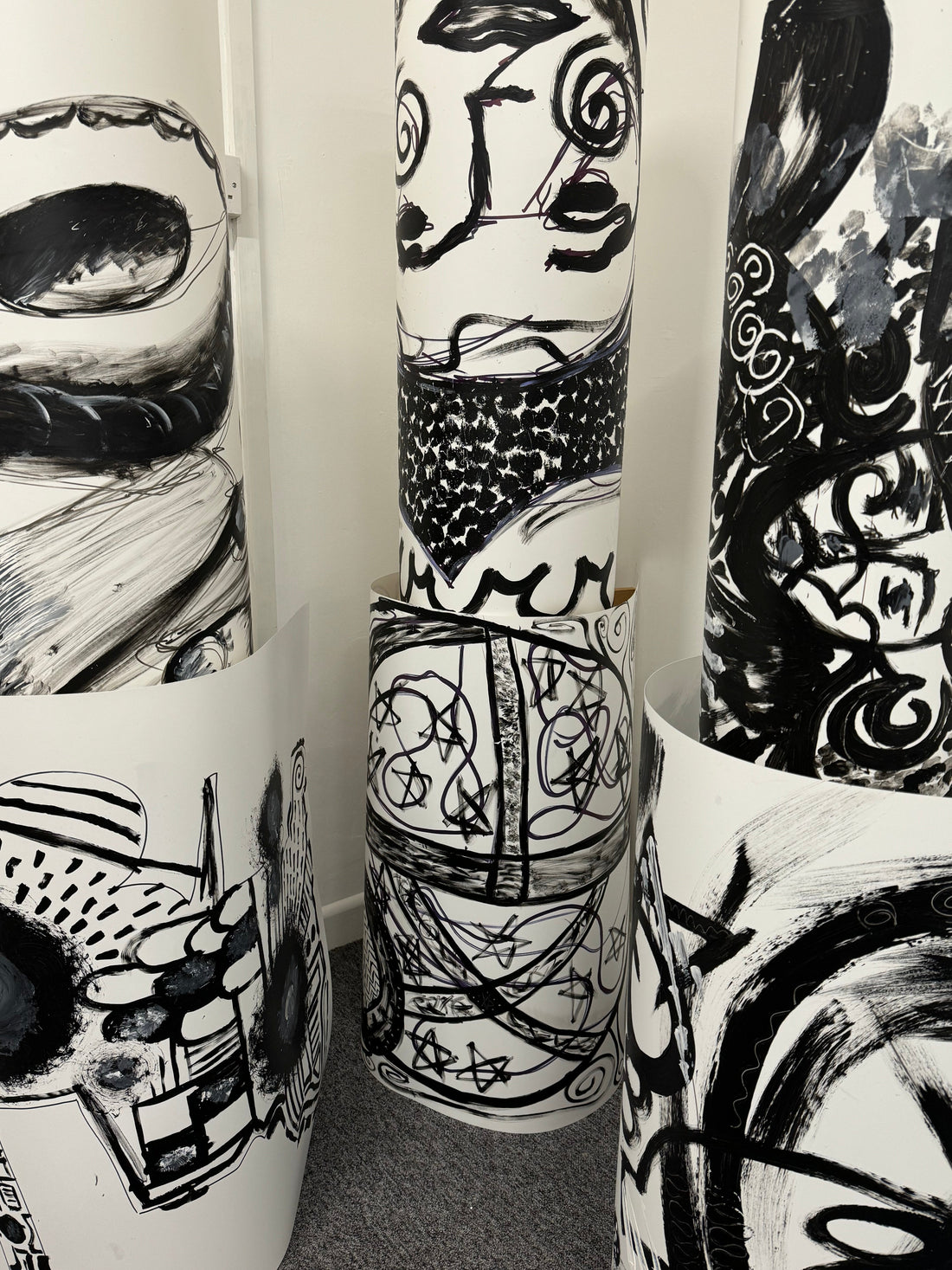
From the National Gallery to the Classroom: Students Reimagine Iconic Works
Following on from the incredible experience of the NG200 Art Road Trip, which celebrated the National Gallery’s 200th anniversary, I was delighted to participate in a project that brought this inspiration to Rednock Secondary School. This initiative aimed to encourage students to engage with art in new and exciting ways, culminating in an exhibition of their work in a local space. The project provided GCSE and A-level students with opportunities to explore, respond to, and create art, inspired by the National Gallery’s collection.
The journey began with an introduction to Hans Holbein’s "The Ambassadors." The first activity challenged students to cut large abstracted shapes from the painting and arrange them onto boards. These vibrant boards were later displayed in the windows of the local library, adding a splash of creativity to the community. This exercise helped the students to loosen up and approach art with a fresh perspective.
In the second activity, students revisited "The Ambassadors," this time working collaboratively on enormous sheets of paper spread across the floor. They created abstract black and white lines that intersected and overlapped, forming the basis for their next creations. Using these lines as inspiration, the students produced A2-sized black and white paintings, exploring mark-making techniques such as hatching, dots, and dry-brush effects. This process encouraged them to experiment and discover new ways of interpreting art.

Another fascinating session introduced the students to pigments and their historical significance. Using a painting that featured ultramarine blue, they learned about the origins of this once-precious pigment, derived from lapis lazuli, and its symbolic use in artworks such as the "Wilton Diptych." The students explored the process of making egg tempera pigment mixes, which they applied to panels using various mark-making techniques. To finish, they experimented with applying gold leaf in unique shapes and areas, adding a touch of luxury and tradition to their work.

The students’ creations were exhibited in an innovative way. Instead of a conventional display, the artworks were coiled into pillars and suspended from the ceiling, adding dynamic movement and creativity to the exhibition space. This unique presentation emphasised the versatility of art and encouraged visitors to view it from new perspectives.
This project provided an inspiring opportunity for students to move beyond the traditional methods of studying art. By working with unusual materials and delving into the history and techniques of iconic works, they gained a deeper appreciation of the creative process and the stories behind famous paintings.
In another related project, I facilitated a community initiative in Cam and Dursley. This involved creating a living painting inspired by Van Gogh’s "Wheat Field with Cypresses." Participants collaborated to transform an entire room into an immersive art experience. Large pieces of material and paper were painted to match Van Gogh’s colours and brushstrokes, and these elements were then cut out and attached to the walls. The result was a vibrant, three-dimensional recreation of the iconic painting, turning the space into a living artwork.
Both projects highlight the power of art to inspire, connect, and transform. They provided participants with hands-on opportunities to explore materials, techniques, and history, while fostering creativity and community engagement. It was a privilege to be part of these initiatives and to witness the incredible outcomes they achieved.

